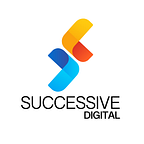Why Modernize Healthcare IT Systems?
Legacy healthcare IT systems are fundamental software components that facilitate essential operations within a medical facility. Due to the rapid advancement of technology, healthcare systems gradually become legacy systems over time. Legacy systems highly hamper medical operations as they are incompatible with modern technology. Do you also need help with legacy systems? You must contact a legacy system modernization company, as they can help you find the best solutions that will suit your business. This blog is a quick brief about the legacy systems we see in the day-to-day healthcare business.
Types of Legacy Healthcare IT Systems
Electronic Health Record Systems
EHR systems hold digital information on a patient’s medical history, diagnosis, treatment plans, prescriptions, allergies, and laboratory test results. Due to the incompatibility of legacy EHR systems, data cannot be shared between healthcare systems and providers. Scalability and usability are essential for these systems and need to be improved.
Laboratory Information Systems (LIS)
LIS simplifies laboratory procedures by handling sample processing, test orders, result reporting, and quality control. Outdated interfaces and little support for new laboratory technology are standard in legacy LIS. They are also incompatible with integrating with other healthcare systems, hindering cooperation and data sharing.
Picture Archiving and Communication Systems (PACS)
PACs help physicians to analyze, and share digital copies of medical images such as X-rays, MRIs, CT scans, and ultrasounds. Legacy PACS systems have storage limitations, slow retrieval times, and incompatibilities with more contemporary imaging modalities. They lack integration with modern technologies like AI and ML.
Radiology Information Systems (RIS)
It completely handles radiology department workflows, such as appointment scheduling, image tracking, report production, and billing. Legacy RIS systems need integration with PACS and EHR systems may cause data fragmentation and manual data entry. Radiology departments find it challenging to comply with changing industry standards and legal regulations.
Telemedicine Systems
Telemedicine systems provide healthcare remotely via virtual consultations, remote monitoring, and telemedicine education. Outdated telemedicine systems don’t have strong security safeguards, which can violate privacy. Additionally, they do not support newly developed telehealth technologies like wearables and remote patient monitoring programs.
Claims Processing Systems
Claims from patients, providers, and payers are sent to claims processing systems for review, decision-making, and payment. Legacy claims processing systems may need to fix outdated coding standards, which could result in incorrect billing and delayed reimbursement. They might also be incapable of automating tasks, leaving workflows for processing claims by hand.
Patient Engagement Systems
Patient engagement systems enable people to actively participate in their care by facilitating communication and interaction between patients and healthcare professionals. Legacy patient engagement systems may not support modern engagement methods like mobile applications and patient portals, which only provide restricted patient communication channels like phone calls or emails.
Why Modernize Healthcare IT Systems?
Modernizing healthcare IT systems is essential to self-improving care, increasing rational effectiveness, and complying with changing regulatory requirements. Upgrading to modern platforms helps improve care coordination, minimize errors, and streamline administrative processes. Modern systems make it easier for technologies like machine learning (ML) and artificial intelligence (AI) to be utilized. This allows for predictive analytics for early disease identification and individualized treatment suggestions.
Improved patient engagement platforms enable patients to actively participate in their care while strong security measures safeguard private health information and guarantee privacy requirements are followed. Cloud-based solutions provide scalability, flexibility, and cost savings, enabling remote access to data and services for flawless care continuity. In the end, updating healthcare IT systems promotes operational effectiveness, regulatory compliance, value-based care, population health management, and bettering patient outcomes.
Conclusion
Organizations must have a solid understanding of the many legacy healthcare IT systems types to successfully traverse the hurdles of infrastructure updates. These systems have been the foundation of healthcare service delivery. However, modernization measures are required in the modern world due to interoperability, scalability, and compliance limitations. Companies that provide legacy system modernization services can help upgrade legacy systems and make them compatible with contemporary technologies.
